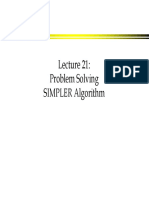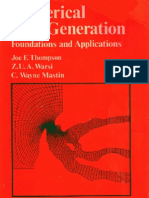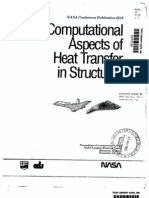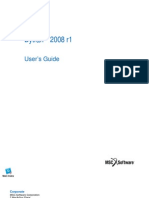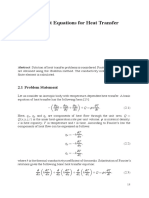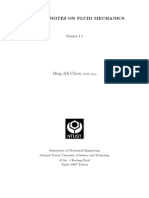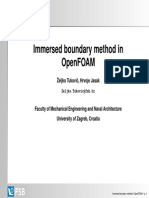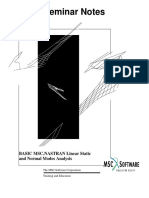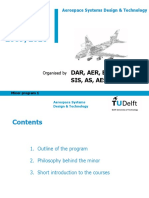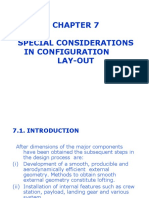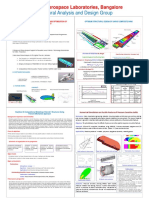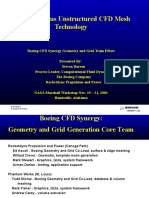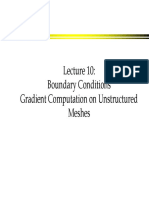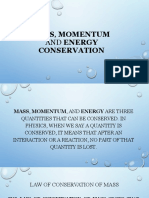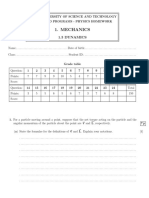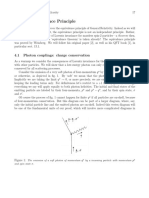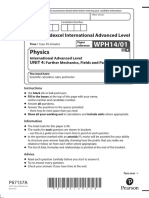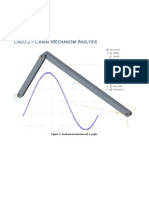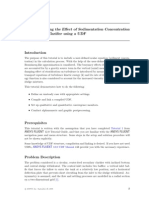100% found this document useful (1 vote)
219 views30 pages20-The SIMPLE Algorithm-B
The SIMPLE algorithm is used to solve the Navier-Stokes equations for incompressible flows. It works by guessing an initial pressure field and solving the momentum equations to get provisional velocities. These velocities do not satisfy continuity. Corrections to the velocities and pressure are computed to enforce continuity. This yields a pressure correction equation that is solved to update the pressure field. The process iterates until the velocities satisfy both continuity and momentum equations within a specified tolerance.
Uploaded by
alagarg137691Copyright
© © All Rights Reserved
We take content rights seriously. If you suspect this is your content, claim it here.
Available Formats
Download as PDF, TXT or read online on Scribd
100% found this document useful (1 vote)
219 views30 pages20-The SIMPLE Algorithm-B
The SIMPLE algorithm is used to solve the Navier-Stokes equations for incompressible flows. It works by guessing an initial pressure field and solving the momentum equations to get provisional velocities. These velocities do not satisfy continuity. Corrections to the velocities and pressure are computed to enforce continuity. This yields a pressure correction equation that is solved to update the pressure field. The process iterates until the velocities satisfy both continuity and momentum equations within a specified tolerance.
Uploaded by
alagarg137691Copyright
© © All Rights Reserved
We take content rights seriously. If you suspect this is your content, claim it here.
Available Formats
Download as PDF, TXT or read online on Scribd
/ 30
